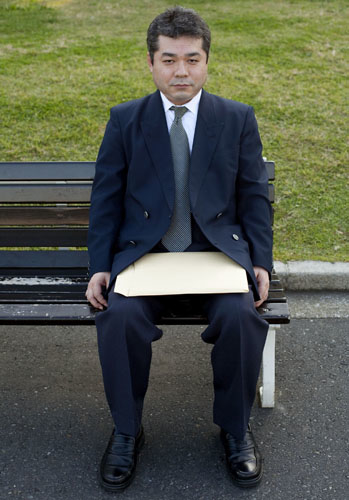For the exhibition ‘One moment, it's really beautiful!’, Paulien Oltheten converted part of the gallery into a set of archives. Displayed on tables are photographs she has produced over the years, grouped in seemingly random fashion, combined with more recent images shot during her stay in Japan. The display gives us the sense that we are peeping into Oltheten’s studio and disturbing her in the middle of the creative process. In contrast, the photographs on the walls are more concrete in form. Oltheten’s final choices have been hung here, furnished with comments. Some of the comments are captions inscribed on the wall or on the photo itself, while others take the form of pen markings or small drawings; a few are on Post-It notes, pasted to the images. We also find comments in the form of other photos that Oltheten made of herself, in which she imitates poses and then explores them in more detail. By putting these photographs together, and more importantly by adding captions and lines to them, Oltheten tries to impart physical qualities to her images. She places them in a narrative, or emphasises certain poses or movements. Time and again, the accent is on the renewed scrutiny of photos made in the past; their juxtaposition generates more and more fresh discoveries.
Paulien Oltheten’s work is an interaction between spontaneous moments seen in the street, which she captures with her camera, and tiny interventions that she adds later on. This interaction is clear from the video series she produced in Japan. She asked people to hold a particular pose or to repeat certain movements. The resulting images all have a certain tension; it’s unclear to what extent the scene is spontaneous or staged. For instance, the image of a Japanese man seated on a bench with a large envelope on his lap becomes more interesting when Oltheten asks him to hang his jacket over the envelope. Oltheten adds her own personal comment, giving the photograph an added dimension: ‘The jacket falls over a bulky envelope (someone sits down next to him and takes the envelope from his lap).’
Opening
5/9/2009: 5 pm
